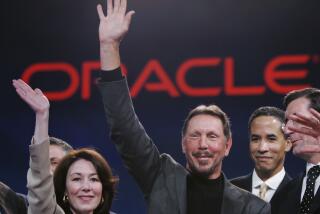Executive heads continue to roll at Barclays amid rate-fixing probe
NEW YORK -- Barclays’ rate-fixing scandal has claimed two additional casualties: the British bank’s chief executive and chief operating officers.
After resisting calls to resign, Barclays CEO Bob Diamond stepped down immediately Tuesday, a week after the bank announced it would pay more than $450 million in fines to American and British authorities for its attempts to manipulate key interest rates, including the London inter-bank offered rate, or LIBOR.
LIBOR is a benchmark used around the globe to determine the costs of borrowed money, from short-term loans to corporate expansions to consumer loans.
In a statement, Diamond said that standing down as CEO was the hardest move he’s made at Barclays.
“The external pressure placed on Barclays has reached a level that risks damaging the franchise -- I cannot let that happen,” Diamond said.
Jerry del Missier, the bank’s chief operating officer, also stepped down Tuesday, effective immediately.
“We built one of the premier global investment banks from scratch -- something that we are all very proud of,” Del Missier said. “The firm is as strong today as it ever has been and is incredibly well placed to succeed within the post-financial reform competitive landscape.”
Tuesday’s resignations follow the previous day’s announcement by Barclays Chairman Marcus Agius that he would step down as well.
Who might be next?
British authorities, including Prime Minister David Cameron, have ramped up pressure on the bank and its top executives in recent days. The threats of criminal prosecutions and parliamentary investigations still loom as authorities continue a wide-ranging investigation into other banks.
ALSO:
Barclays CEO Bob Diamond quits over rate-fixing scandal
Barclays Chairman Marcus Agius resigns in rate-fixing probe
Supreme Court ruling causes big swings in healthcare stocks
More to Read
Inside the business of entertainment
The Wide Shot brings you news, analysis and insights on everything from streaming wars to production — and what it all means for the future.
You may occasionally receive promotional content from the Los Angeles Times.










